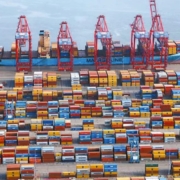Labor Strike Crisis Looms Over U.S. East Coast and Gulf Coast Ports
labor strike crisis is brewing among port workers along the U.S. East Coast and Gulf Coast. The International Longshoremen’s Association (ILA), representing tens of thousands of dockworkers, has halted contract negotiations with the United States Maritime Alliance (USMX) over issues of port automation technology. The union is protesting the use of automated gate systems that do not require union labor to operate, claiming it violates existing labor agreements.
The ILA’s main demands include preventing automation from replacing workers’ jobs, securing similar wage increases to those achieved by the International Longshore and Warehouse Union (ILWU) on the West Coast, and ensuring that new terminal jobs are assigned to union members. The current contract is set to expire on September 30th, and the union has stated it will not extend the contract deadline, meaning a strike is likely if a new agreement is not reached by then.
If a strike occurs, it will have a significant impact on the supply chain, potentially causing delays and increased costs for imported goods, negatively affecting multiple industries, including retail. Businesses could face inventory shortages and price increases. Additionally, past strike actions have led to increased airfreight demand as companies seek alternative solutions to avoid disruptions in ocean services.
This strike crisis highlights the conflict between port automation and workers’ interests, the union’s tough stance, and the complexities of labor contract negotiations, foreshadowing uncertainty in U.S. port operations over the coming months.
Here are some additional points to note:
- The article provides a concise and informative overview of the potential labor strike at U.S. East Coast and Gulf Coast ports.
- It highlights the key issues at stake, including concerns over automation, wage increases, and job security.
- The article discusses the potential impact of a strike on the supply chain and businesses.
- It concludes by emphasizing the uncertainty surrounding the situation and the potential for disruptions to port operations.





